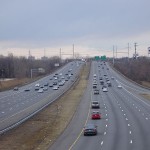Speeding cars being caught by I-95 cameras, but opposition lingers
Speeding cars have been caught by a network of cameras that span the long stretch of I-95 from Miami to Canada since their installation, and local officials and road safety groups have hailed the cameras for the decline in deaths due to vehicular accidents.
But there are some legislators who argue that the system of cameras that try to catch drivers of speeding cars is unconstitutional because it allows selective law enforcement. Senate Transportation Committee Chairman Sen. Larry Grooms said earlier that, "We're absolutely shutting it down."
Motorists who oppose the cameras say that the no-contact policy is flawed and that they prefer having to be stopped by an officer when a traffic violation was made. Under the system in place, the cameras snap pictures of drivers and vehicles if they pass the speed limit. They will not be notified until a ticket will arrive in the mail in a week or two.
If the identity of the driver is not clearly established through matching snapped photos with drivers' licenses, the police does not issue tickets.
The Insurance Institute for Highway Safety says that at least 14 states plus the District of Columbia use cameras to nab speeding cars. But elsewhere, the system is being met with disdain. Arizona had to scrap its speeding camera system last year because of criticism that it was only installed as a money-making scheme.
Speed cameras are "a very effective countermeasure" to road mishaps according to the National Highway Traffic Safety Administration, but also considers them as complementary to the job of highway patrol officers in catching speeding cars.
